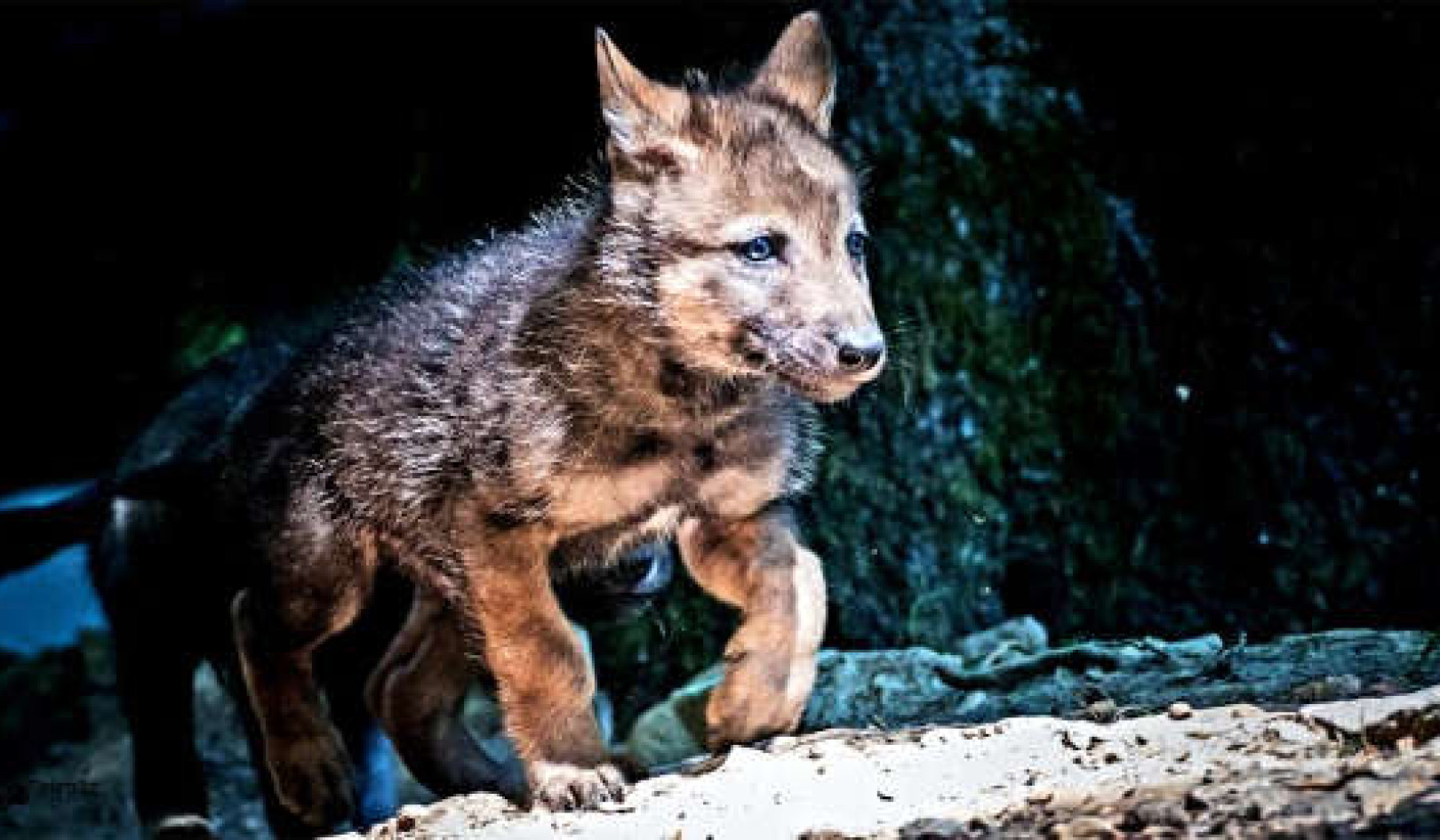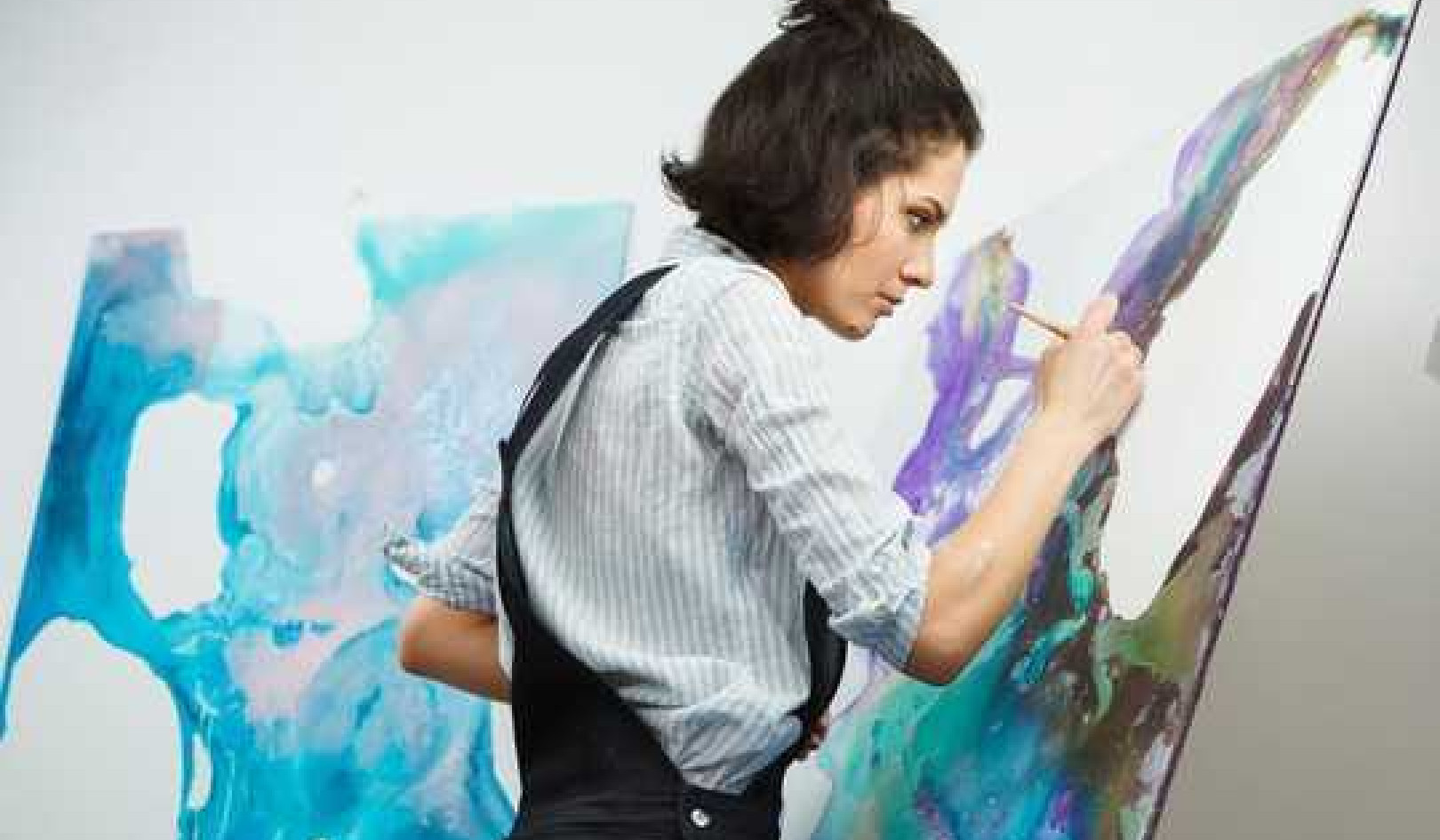
Image by Kylienne Clark
No creature ever falls short of its own completion:
wherever it stands, it does not fail to cover the ground.
— D?gen
As a composer, John Cage sought to get the weight of Beethoven and the other past masters off his shoulders. He felt it was essential to be freed from the repetitive patterns of personality and style (“memory, tastes, likes, and dislikes”) and to free audiences from their expectations of what art should look and sound like.
So he eventually chose to compose music using coin tosses to pick pitches and durations, or throws of the I Ching, or other chance operations. I remember visiting him once in his New York apartment, which was filled with dozens of well-tended houseplants and several IBM PCs arrayed on the floor, connected to clacking dot matrix printers, churning out thousands of I Ching tosses for a new composition.
Cage told me that he distrusted improvisation because it bears the imprint of one’s predilections and habits, and he wanted to create work beyond the control of the ego, to be led into a new experience rather than affirming and reinforcing existing habits. He said that he was not interested in art as self-expression but as self-alteration.
I then asked him about mushrooms. Cage was an avid and authoritative mycologist. Part of his extensive collection is now housed at the University of California in Santa Cruz. He got into this field because when he was a student a teacher said to him, John, you are so intent on music; try to be more well-rounded.
John went home from this encounter, and in his already trademark fashion looked up music in the dictionary and then looked above it on the page. The first word that caught his eye was mushroom. Off he went, hunting, classifying, studying, and cooking them.
So I asked him that afternoon, as the dot matrix printers clacked away, “John, when you’re in the woods picking mushrooms, and you decide which ones to eat and which ones are poisonous, do you throw the I Ching, or do you use your knowledge and experience of mushrooms?”
He gave me that broad, beatific grin of his, lighting up the room. “Ah,” he said.
Improvisation: Creative, Original, Surprising?
Thirty years later I sit out on my porch on a January morning, gazing at the midwinter sun and the slanting play of light and shadows from the bare trees. A few years ago this would have been a freezing morning, but we live in the age of global warming, so I am enjoying it and trying, for the moment, not to think of the long-term consequences.
The thought that pops into my head is: The sun is up so I will go outdoors and write about improvising. The sunrise every morning, the cycle of the year, is the archetype of the regularity of life: predictable clockwork. What could be less improvisational than the Earth’s movement around the sun?
We think of improvisation as creative, original, surprising. But I return to my daily experience of improvising music — and these improvisations are so much like each other. I have the occasional breakthrough to an extended technique or fresh infusion from another culture. But mostly (and even with new acoustic and electronic toys, with new partners and their diverse personalities) my improvisations sound like me, my dancing looks like me.
We live in an art culture that identifies creativity with novelty. We think of creating as making something new that has never been made before, a eureka like the theory of relativity or the Eroica Symphony. But often we create more of the same, and that is just what’s needed.
The Patterning of Our Organism
Beethoven’s compositions, through all the phases of his revolutionary inventiveness and spiritual development, sound like Beethoven. The style is the person. The clockwork activity of the Earth rotating, our regular experience of the sun, coupled with the variations of weather and the local ecosystem, physical, chemical, biological, mechanical cycles of activity, all keep producing results that amaze me.
With chance operations designed to bypass personal desires, Cage generated a huge output of texts, musical compositions, visual art, and other performances. Yet these distinctively look, sound, and feel like pieces by John Cage. He could not bypass the patterning of his organism. His work is full of his personality and style. Speeches he wrote using aleatory methods still look exactly like John Cage writings.
I don’t think any of us can escape memories, tastes, likes and dislikes. Ornette Coleman’s free jazz opened up limitless possibilities for other musicians, but he always sounded marvelously like himself, and he encouraged us to sound like ourselves as we evolve and learn.
Keith Jarrett, one of the most brilliant improvisers on Earth, has recorded and performed solo improvisations on piano for some forty years. He starts from a blank slate each time and jumps into the unknown. He strives every day to develop his improvisations beyond what he had done before, to never repeat a piece he played before so that each concert is a step into a new territory for pianist and audience. Yet his improvisations sound exactly like Keith Jarrett improvisations.
Replicating and Evolving
Life replicates as it evolves, evolves as it replicates. The biologist Conrad Waddington coined the term chreods, which we can think of as grooves in spacetime, grooves of patterned activity. Heraclitus’s river wants to flow in a certain bed, with variations: body, mind, patterns of movement, memory, the epigenesis of cells as they grow. I don’t have any cells that existed seven years ago, but new ones keep growing into more or less the same patterns.
There are themes to one’s life. Jung called this individuation. As we get older, if we are aging consciously with a sense of personal evolution and learning, we grow and develop, in concert with our companions and our community, but at the same time we are plowing that furrow or chreod that is our personality. As we learn and evolve, we become more distinctly ourselves.
Jane Austen, James Joyce, John Lennon, Georgia O’Keeffe, any creative person we can think of, no matter how prolific, had five or six elements that recombine and interplay in their work and by which we know them. Cage’s warm grin was his own and carried his tastes and the imprimatur of his life history.
If you have read Austen and Joyce, they are inside you; if you listen to music, influences from diverse cultures are inside you, digested and assimilated into the integrated complex that is you. Even the music you hate sticks with you, as do advertising jingles and ditties from kindergarten. Likewise with stories, images, films — everything you’ve seen and known and read can be digested and can become you.
You Are The Origin
Let the influences of your childhood reading and experiences be there. This is why there is no reason to be concerned with originality. Your particular expression of what has gone into you and is now coming out is always already yours: you are the origin.
Let us revisit those two old mystery people, grandparents of Western civilization: Heraclitus and Ecclesiastes. Ecclesiastes said there is nothing new under the sun, that every event is a part of cycles that have repeated forever. Heraclitus said you can’t step in the same river twice, everything changes, nothing repeats. Both were right. Rub those two perspectives together, like rubbing your hands together. Pattern and change move as a pair, like the foot before and the foot behind in walking.
The Ultimate Creative Process
One night I took a walk on a rocky California beach, remembering that I had come to the same place when I was about twelve years old. Back then I was interested in marine biology and dragged my parents there because that piece of coast, from Pacific Grove down to Big Sur, has some of the most beautiful tide pools in the world.
Walking down to the shore conjured my childhood fascination with tide pools. They are replete with colorful, wriggly life, close to the dance of evolution. In the history of Earth, the tide pools were the stewpot where life arose, the first Eden.
Stepping from one wet rock to another, I became a witness to the ultimate creative process, to the interbeing of the natural world. Crabs and mussels, coral and anemones create little harbors in the rock that fit their own bodies. I saw how each animal and plant adapts its little zone of rock and water, even its very shape, to the presence of the other creatures. They’ve created their space.
Community and individuals relate in ever-shifting balance. In the complex ecosystem of the tide pools, every living thing has created a space that fits its own organism in relationship to all the others with which it lives. Over a period of time, which may be one month or millions of years, they mutually adapt so that there is a niche for each creature.
Self Vs. “Other” Is A False Dichotomy
In the Gospel of St. Matthew, Jesus says, “Consider the lilies of the field, how they grow; they toil not, neither do they spin: and yet I say unto you, even Solomon in all his glory was not arrayed like one of these.” The plants, the animals, beings in and of their own nature thrive, they eat each other and compete, they coevolve and learn and express their individuality in concert with others.
How does nature make space for her burgeoning creativity? The answer that came to me that night, standing out there by the tide pools, was deceptively simple:
Beings in nature
create space for themselves
by being themselves.
This image intertwines all the entities that we normally split into categories with our plans and purposes. Form and freedom, habit and novelty, work and play, sacred and secular, are inseparable in the spontaneous flow of life. Questions of self versus community, of self versus environment, questions of new versus old cease to exist.
Are we following the path of genetics, culture, personality, and habit, or are we innovating? Expressing ourselves or altering ourselves, or discovering what others have to teach us? These are false dichotomies. We get a taste of this ecological vision in our art that evolves over years and our spontaneous play with each other that arises and disappears.
I take a break from writing and step outside onto the verge of the forest. I find a giant puffball mushroom growing in community with pine, maple, moss, creeping cedar, and ground cover on the moist soil.
The Expression of Your Inner Nature
Creatures in the tide pools don’t create space for themselves by being something other than themselves. They are not concerned about agenda, image, or someone else’s idea of how they should act. We can learn something from these simple animals.
If you really want to be this, whatever expression of your inner nature this may be, don’t shift over to another place to prove or justify what you are doing. As they evolve and adapt, these creatures are not worrying about whether their activities are innovative or conservative.
The vital activities of making a living, of creativity, growth, heritage, sameness, difference, change, are intertwined with the totality of life. It is with the same instinctual vitality that artists should approach their work.
©2019 by Stephen Nachmanovitch.
All Rights Reserved. Excerpted with permission.
Publisher: New World Library. www.newworldlibrary.com
Article Source
The Art of Is: Improvising as a Way of Life
by Stephen Nachmanovitch “The Art of Is is a philosophical meditation on living, living fully, living in the present. To the author, an improvisation is a co-creation that arises out of listening and mutual attentiveness, out of a universal bond of sharing that connects all humanity. Drawing from the wisdom of the ages, The Art of Is not only gives the reader an inside view of the states of mind that give rise to improvisation, it is also a celebration of the power of the human spirit, which — when exercised with love, immense patience, and discipline — is an antidote to hate.” — Yo-Yo Ma, cellist (Book is also available in Kindle format. Audiobook, and MP3 CD)
“The Art of Is is a philosophical meditation on living, living fully, living in the present. To the author, an improvisation is a co-creation that arises out of listening and mutual attentiveness, out of a universal bond of sharing that connects all humanity. Drawing from the wisdom of the ages, The Art of Is not only gives the reader an inside view of the states of mind that give rise to improvisation, it is also a celebration of the power of the human spirit, which — when exercised with love, immense patience, and discipline — is an antidote to hate.” — Yo-Yo Ma, cellist (Book is also available in Kindle format. Audiobook, and MP3 CD)
About the Author
 Stephen Nachmanovitch, PhD performs and teaches internationally as an improvisational violinist, and at the intersections of music, dance, theater, and multimedia arts. In the 1970s he was a pioneer in free improvisation on violin, viola and electric violin. He has presented master classes and workshops at many conservatories and universities, and has had numerous appearances on radio, television, and at music and theater festivals. He has collaborated with other artists in media including music, dance, theater, and film, and has developed programs melding art, music, literature, and computer technology. He has created computer software including The World Music Menu and Visual Music Tone Painter. He is the author of Free Play (Penguin, 1990) and The Art of Is (New World Library, 2019). Visit his website at http://www.freeplay.com/
Stephen Nachmanovitch, PhD performs and teaches internationally as an improvisational violinist, and at the intersections of music, dance, theater, and multimedia arts. In the 1970s he was a pioneer in free improvisation on violin, viola and electric violin. He has presented master classes and workshops at many conservatories and universities, and has had numerous appearances on radio, television, and at music and theater festivals. He has collaborated with other artists in media including music, dance, theater, and film, and has developed programs melding art, music, literature, and computer technology. He has created computer software including The World Music Menu and Visual Music Tone Painter. He is the author of Free Play (Penguin, 1990) and The Art of Is (New World Library, 2019). Visit his website at http://www.freeplay.com/
Video: Improvisation Is...
{vembed Y=6ZfgG8B0Y3Q}
Related Books
More books by this author
at

Thanks for visiting InnerSelf.com, where there are 20,000+ life-altering articles promoting "New Attitudes and New Possibilities." All articles are translated into 30+ languages. Subscribe to InnerSelf Magazine, published weekly, and Marie T Russell's Daily Inspiration. InnerSelf Magazine has been published since 1985.

Thanks for visiting InnerSelf.com, where there are 20,000+ life-altering articles promoting "New Attitudes and New Possibilities." All articles are translated into 30+ languages. Subscribe to InnerSelf Magazine, published weekly, and Marie T Russell's Daily Inspiration. InnerSelf Magazine has been published since 1985.
























